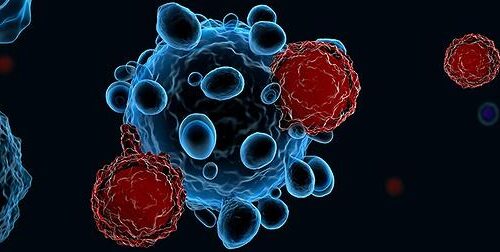Global Flow Cytometry in Oncology Market to Reach $5.25 Billion by 2031
The global flow cytometry in oncology market is projected to reach $5.25 billion by 2031,according to CRI’s new report. The study also highlights that the market is set to witness a CAGR of 12.02% during the forecast period 2021-2031.
https://www.cri-report.com/product/global-flow-cytometry-in-oncology-market-focus-on-product-type-technology-type-of-cancer-applications-end-users-country-data-16-countries-and-competitive-landscape-analysis-and-forecast-20/
The comprehensive study of the global flow cytometry in oncology market extensively covers the following:
• Market numbers on micro-segments that are influencing the market
• More than 200 products present in the market
• Evaluation of over 25 brands
• Market share analysis for more than 20 product categories
• End-user preference data for over 50 end users
• Detailed global and regional market share analysis including the scrutiny of more than 16 countries
• Study of more than 25 companies’ data
Besides these parameters, the study also encompasses the market growth drivers, opportunities, market restraining factors, competition mapping, segmental analysis, and a visual dashboard of 200+ products.
This report indicates that the rising incidence of hematological malignancies, increasing fund infusions for hematological malignancies, and growing consumer awareness for tailored therapy and precision medicine in the market are fueling the growth of the global flow cytometry in oncology market.
The market intelligence additionally throws a spotlight on the opportunities existing in the market, such as technological evolution in the field of flow cytometry and growth in solid tumor applications of flow cytometry.
To gain a holistic view of the market, data from different segments of the market has been analyzed minutely. These segments include product type, technology, type of cancer, applications, end users, and regions. The type of cancer, application, and the region segments have been further sub-segmented to offer an in-depth analysis of the global flow cytometry in oncology market.
The product and ecosystem analysis of the global market include data analysis on the satisfaction level of different pricing analyses of preferred flow cytometry in oncology products. Pertaining to the market segmentation, the product segment is segmented into assays and kits, instruments, reagents and consumables, and software. The technology segment has been segregated into cell-based and bead-based. The type of cancer segment has been broadly segmented into hematological malignancies and solid tumor. In addition, the hematological malignancies have been further segmented into lymphoma, leukemia, myeloma, and other hematological malignancies. Similarly, the solid tumors segment has been further segmented into breast cancer, prostate cancer, colorectal cancer (CRC), lung cancer, and other solid tumors. Further, the application segment of the market has been broadly segmented into translational research and clinical applications. The clinical applications segment has been further segmented to screening and diagnostics and treatment monitory. Moreover, the end user segment in the market has been classified into diagnostic laboratories, hospitals and healthcare clinics, academic and research institutions, and other end users.
Key insights are drawn from in-depth interviews with the key opinion leaders of more than 15 leading companies, market participants, and vendors. The key players profiled in the report include Agilent Technologies, Inc., Apogee Flow Systems Ltd., Becton, Dickinson and Company, bioAffinity Technologies, Inc., Bio-Rad Laboratories, Inc., Bio-Techne Corporation, Cytek Biosciences, Cytognos, S.L., Danaher Corporation, Miltenyi Biotec B.V. & Co. KG, Laboratory Corporation of America Holdings, Luminex Corporation, NeoGenomics Laboratories, Inc., Sony Corporation, and Thermo Fisher Scientific Inc.
The study also offers strategic recommendations that can help organizations in tracking various products and trends that are changing the dynamics of the market. The recommendations also offer bespoke research services to help organizations meet their objectives.
Who should buy this report?
• Manufacturers and service providers who are involved in the development and commercialization of flow cytometry-based products for oncology
• Emerging companies in the field of flow cytometry in oncology to assess the market situation
How can market intelligence on flow cytometry in oncology add value to an organization’s decision-making process?
• Aid in product development
• Help in targeting a segment for launching new products
• Offer go-to market access strategies
• Support in diversifying the product portfolio basis risk and progression of underlying technologies
• Help in analyzing specifications
• Aid in understanding the end-user landscape
• Gain holistic views pertaining to the regions and understand the market potential of the countries.
• Support in analyzing the competitive landscape to gain an understanding of the business strategies incorporated by the companies
Insightful Questions Covered to Enable Companies take Strategic Decisions
• How is flow cytometry revolutionizing the field of oncology?
• What are the major market drivers, challenges, and opportunities in the global flow cytometry in oncology market?
• What are the underlying structures resulting in the emerging trends within the global flow cytometry in oncology market?
• How is the COVID-19 pandemic impacting the global flow cytometry in oncology ecosystem?
• What are the key development strategies that are being implemented by the major players in order to sustain the competitive market?
• What are the key regulatory implications in developed and developing regions pertaining to the use of flow cytometry in the field of oncology?
• What are the potential entry barriers expected to be faced by the companies willing to enter a particular region?
• How is each segment of the market expected to grow during the forecast period 2021-2031, and what is the anticipated revenue to be generated by each of the segments? Following are the segments:
o Product Type (assays and kits, instruments, reagents and consumables, and software)
o Technology (cell-based and bead-based)
o Type of Cancer (hematological malignancies and solid tumor)
o Application (translational research and clinical applications)
o End User (diagnostic laboratories, hospitals and healthcare clinics, academic and research institutions, and other end users)
o Region (North America, Europe, Asia-Pacific, Latin America, and Rest-of-the-World)
• What are the growth opportunities for the companies in the region of their operation?
• Who are the leading players with significant offerings in the global flow cytometry in oncology market?
• Which companies are anticipated to be highly disruptive in the future, and why?

